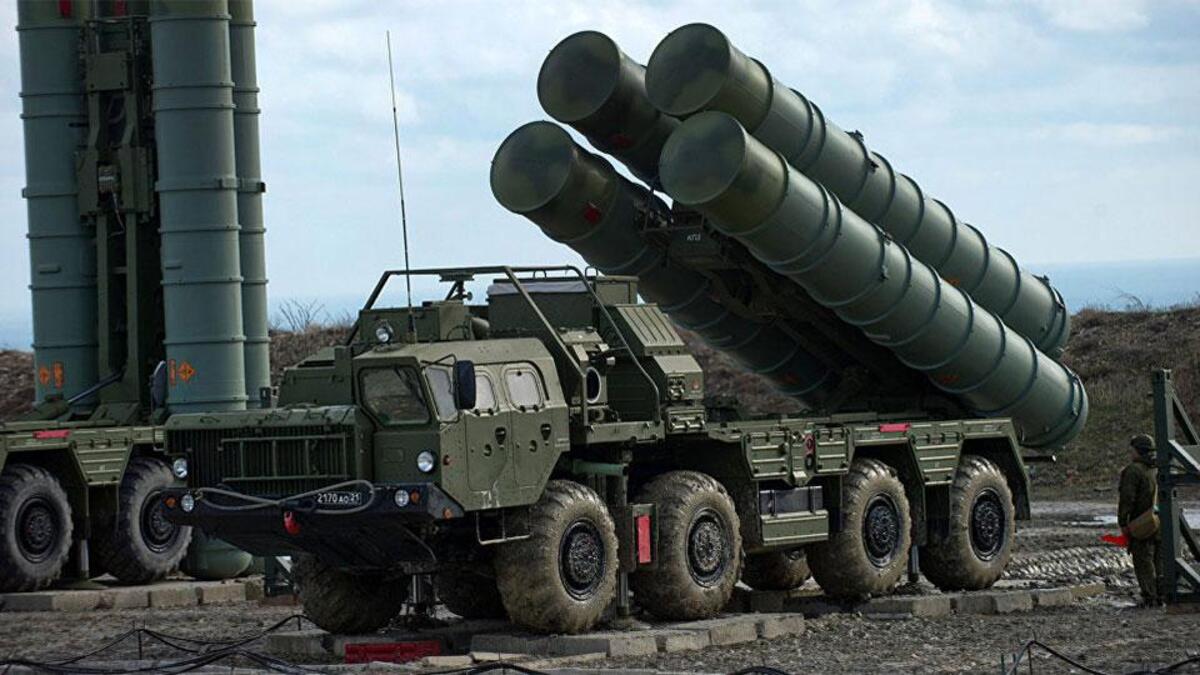The Russian army has received 25 S-400 Triumf anti-aircraft missile systems as part of the state armaments program in the past four years, President Vladimir Putin announced on November 1 according to Sputnik News Agency.
Block IV Upgrade: F-35s Could Fall Behind Chinese Stealth Fighters If US Delays Modernization Plans
“Under the state armament program, 25 S-400 anti-aircraft missile systems and over 70 modern fighters were delivered over the past four years. More than 20 S-300 systems and 90 aircraft were upgraded,” Putin told the defense ministry and representatives of the defense industry.
He also stated that the Russian Army will get the first batch of S-500s. Its development, on the other hand, is years behind schedule. The Russian Army previously said that it would receive the first S-500 systems in 2020.
The S-500 ‘Prometey’ or ‘Prometheus’ is considered the world’s most advanced air defense system, with a maximum range of 600 km and the ability to counter attacks from space. In April, its manufacturer claimed that the development of the system is about to be complete.

The S-500 was developed to intercept American sophisticated stealth platforms, such as the F-35 Lightning II and F-22 Raptor, which are regarded as the world’s most advanced fighter planes.
The S-500 is a considerable upgrade from its predecessor, the S-400 and it will significantly improve any country’s air defenses.
Killer Robots: Watch How AI-Programmed ‘Military Robots Could Make Human Soldiers Completely Obsolete
The Russian Ministry of Defense has triumphantly announced the S-500 anti-aircraft missile system has no counterparts in the world and is designed to defeat a potential enemy’s whole spectrum of existing and promising aerospace attack weapons at all altitudes and speeds.
The S-400 Triumf
The S-400 surface-to-air missile (SAM) system has been developed by Russia’s Almaz Central Design Bureau for Marine Engineering in the 1990s as an upgrade from the S-300 family.
The S-400 incorporates autonomous detection, anti-aircraft missile systems, multifunction radar, targeting systems, launchers, and a command and control center.
It has a range of 400 km and can engage aerial targets such as aircraft, unmanned aerial vehicles (UAVs), ballistic and cruise missiles at altitudes of up to 30 km, and fire three types of missiles to build a layered defense.

The system’s key benefits are its capacity to track a large number of stealth targets, as well as its high flexibility and mobility, which allows it to be deployed and engage targets in minutes.
The command post is outfitted with LCD consoles that handle air space surveillance data, as well as manage and monitor the long-range surveillance radar. It keeps track of dangers to aircraft and prioritizes them.
The S-400 was defined as “one of the best air defense systems currently built” by The Economist in 2017, and “among the most advanced air defense systems available” by Siemon Wezeman of the Stockholm International Peace Research Institute (SIPRI).
China and Turkey are among the countries that have purchased S-400 systems from Russia. India is all set to receive the delivery of this system by the end of this year or early next year.
The S-500 Prometey
The S-500 Prometey, also known as Triumfator-M, is the eagerly awaited “successor” to the S-400 and offers a number of best-in-class characteristics.
The system will be extremely portable and deployable quickly. Experts believe the system’s prowess can affect enemy intercontinental ballistic missiles in the middle and end stages of flight.
Its manufacturer Almaz-Antey reports that the external target-designation system (RLS Voronezh-DM and missile defense system A-135 radar Don-2N) will be capable of intercepting enemy ballistic missiles in the mid-early stages of flight, which is one of the S-500 project’s final stages.
It’s to have a response time of less than 4 seconds (as opposed to less than 10 for the S-400).
The S-500 air defense system uses two new types of missiles — the 77N6-N and 77N6-N1. The 77N6 missiles are said to be capable of intercepting ICBMs, hypersonic cruise missiles, and other airborne objects traveling at speeds more than Mach 5 or five times the speed of sound.
The 91N6E (M) S-band acquisition radar, the 96L6-TsP C-band acquisition radar, the 76T6 multi-mode engagement radar, and the 77T6 anti-ballistic missile engagement radar are among the four radar vehicles attached to each battery of the S-500 system.
The SAM system is said to be capable of detecting ballistic and airborne targets at distances of up to 2,000 and 800 km, respectively, owing to this complex radar system.
The S-500 system’s improved capabilities can supplement the present S-300 and S-400 systems, adding a layer of defense against intensive strikes. It is also expected to be effective in defending against hypersonic missiles too.
Significant delays have been experienced with the S-500. Russia declared its design development completed in 2011, however, serial manufacturing was pushed back from 2014 to 2017, then to 2021, and finally to 2025.
Russia may be intentionally delaying the S-500’s deployment in order to keep production lines open for the S-400 and maintain exports, according to defense analysts.
Alexander Mikheev, the head of Russia’s state arms exporter Rosoboronexport, earlier told Sputnik that Russia plans to present its prospective S-500 Prometey surface-to-air missile/anti-ballistic missile system on the international arms market by 2030.
“We plan to introduce the S-500 air defense missile system on the global market by 2030,” Mikheev said at the Army-2021 military forum.
The S-500 Prometey is a next-generation surface-to-air missile system with a range of around 600 kilometers (370 miles), designed for intercepting and destroying intercontinental ballistic missiles, as well as hypersonic cruise missiles and aircraft.
- With inputs from Sputnik News Agency
- Contact the author at ashishmichel@gmail.com
- Follow EurAsian Times on Google News




